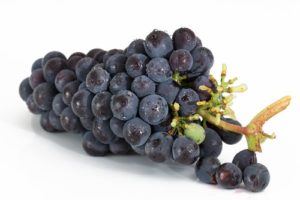If you are new to the world of fine wine but are enjoying learning all about its nuances, then one of the biggest aspects to this has been the wine lingo you hear many people speaking in.
Seasoned sommeliers and wine enthusiasts are somewhat infamous for using all sorts of sophisticated wine terms and this can leave newbies a little bit daunted.
We’ve been thinking about this here at Octavian and although we have generations of experience in the world’s finest wines and its storage, we are aware that some individuals could be struggling to get to grips with wine slang and it may well be hard for you to ask for help in certain social circles.
So, we have put together the latest in a series of fine wine guides here at the Octavian blog, dedicated to giving you a great start at learning wine language, so you can start to show off at social events and also when tasting or even purchasing your next case of fine wine.

Acidity
Many terms in the wine buff’s dictionary may sound pretty self-explanatory, but the fact is that they can be slightly different to their usual use. So, acidity may sound like one of these culprits but in the world of fine wine, this is actually quite different than say a food dish.
For instance, the acidity in a lemon will make you squint whereas acid levels in wine are often very refreshing, especially in the case of the higher quality wines out there. There are of course, very acidic and cheap wines that could have the aforementioned effect but we would recommend you steer well clear of them anyway.
So don’t be afraid to refer to acidity when tasting and enjoying wine with your peers. Acidity is often influenced by alcohol levels and the legs you will see down the side of your glass. The balance of this is crucial, and is definitely one for you to research further as you expand your wine lingo knowledge.
Oaky
Oakiness in wine is very similar. We have all had spare ribs or a barbecue where we have tasted oak in our dishes and this happens with many fine wines too, but there are differences. Any wine connoisseur or expert will look out for oaky flavours and these can often penetrate the best wines and add to the overall balance of the product.
Often this has been diffused into the wine, as we have discussed in previous features here at Octavian and getting this right is an art that many wine makers have perfected over the centuries. This will also depend on the type and age of the oak used in the process.
Variants of the oak flavours you should be looking out for are toast, nuts, vanilla, cinnamon, dill and of course, smoke. So be sure to add this to your list of wine terms to investigate further.
Finish
Another term that will earn you some great kudos when chatting to more experienced fine wine enthusiast, is finish. Again, you may be tempted to try to suss this one out yourself but get it wrong and you could be left red faced in front on some guests you would far rather impress.
The finish of a fine wine is essentially how long the pleasant taste of your Bordeaux or Sauvignon Blanc lasts for. The cheaper wines tend to be pleasant for a limited amount of time but as you will know, the finer, more expensive wines will have a far longer finish and encourage you to enjoy far more of the product.
Ensuring that your wines breathe prior to serving will also extend their finish, adding to your enjoyment.
Tannins
Our final term that is guaranteed to leave you looking like a wine slang professional is tannins. Being able to speak confident about acidity, oakiness, finish and the tannins of a wine at social functions and even when investing in fine wine, will convince even the most experienced aficionados that you have a strong grasp of wine language.
A tannin is a compound in the wine and when overdone, this is what will make you feel dehydrated and need a glass of water as it can dry ones mouth out. However, when negotiated properly during production the tannin will add to the wines longevity and Nebbiolos and Syrahs depend on this for their richness.
On the other end of the scale, Pinot Noir and Merlot will have low levels of tannin, making them easier to drink quickly and perhaps more versatile.
These are our top tips as you get started on modern wine lingo and a great place to start. Of course, as you become more confident and learn more and more about fine wine, your dictionary will start to expand a lot more quickly.
Be sure to visit the Octavian blog again soon for more fine wine features and articles like this one.